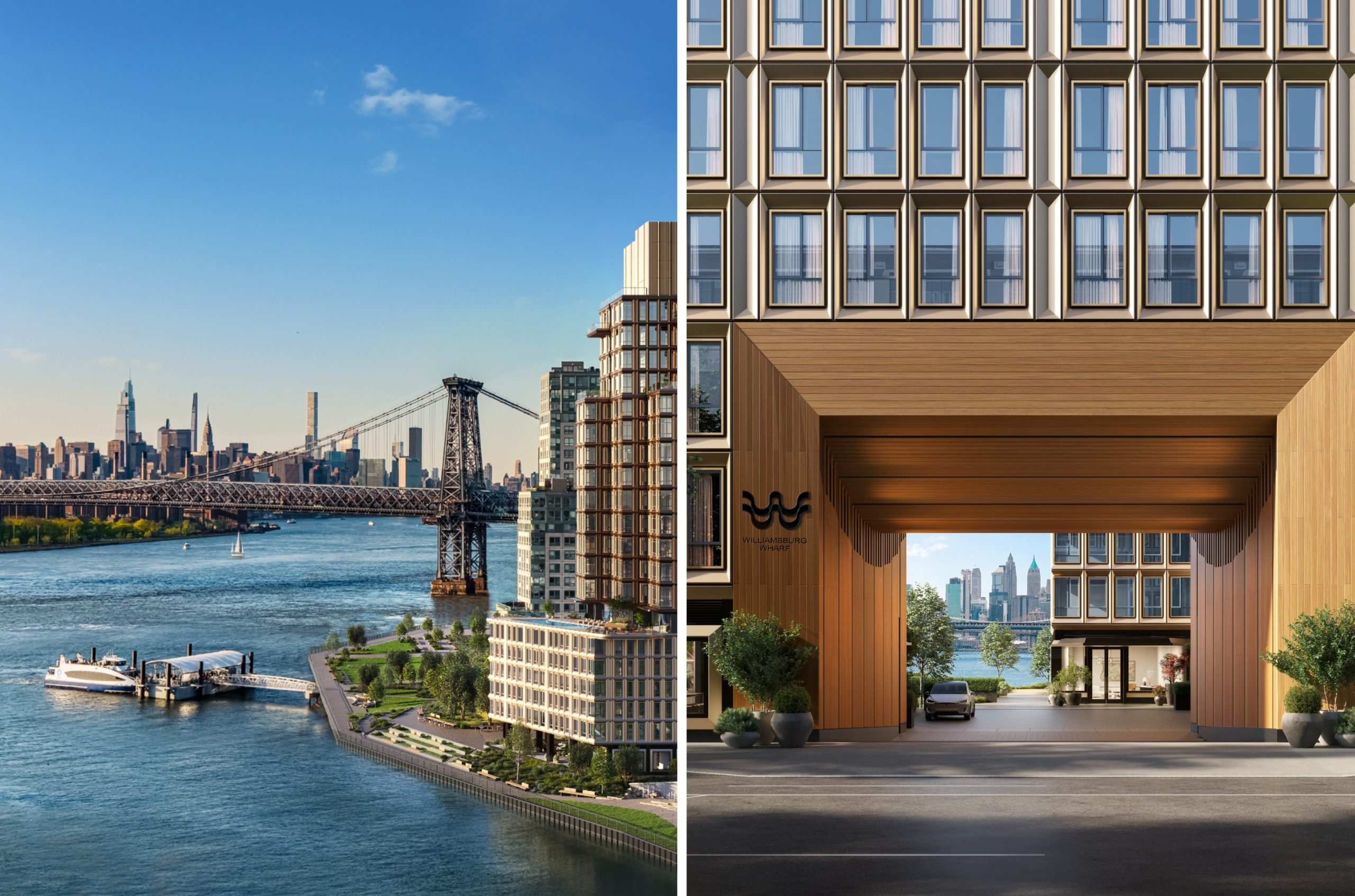Williamsburg—New York City’s ultimate hipster mecca known for its skinny jean-wearing, bearded artist-types—will be injected with a breath of “sophisticated” luxury on its prime waterfront location with a new development in the works aiming to create a “resort-style” destination in the area.
The Brooklyn neighborhood has been shedding its bohemian/edgy image in recent years with a new crop of luxury venues, such as the Williamsburg Wharf, the first phase of which will be completed in 2025.
Brandon Haw, the president and CEO of Brandon Haw Architecture, the design firm behind the masterplan of the new development, told Newsweek: “Williamsburg Wharf represents a new paradigm shift for this marketplace in Brooklyn adding to the ever-growing shift from Manhattan living to the attractions of the vibrant community one finds in Brooklyn.
“The timeless classic design displays a richness of detailing and attention to detail not often found in the marketplace—and it is this qualitative shift that shall set it apart as a destination residence on the Brooklyn waterfront,” he added.
Dubbed “the first luxury residential development of its kind” in the neighborhood, the upcoming complex will transform “the last developable parcel on the Williamsburg waterfront into a one-of-kind landmark,” according to the Naftali Group, the real estate and investment firm behind the project.
Consisting of five 22-story luxury residential towers offering a total of 850 residences and 525 feet of frontage on the East River, the development will offer approximately one million square feet of residential, commercial and retail space, including an open lawn and waterfront park as well as a pedestrian boulevard featuring a sculptural public art piece. Each tower will come with its own collection of private “resort-style” amenities for wellness and leisure.
Hayes Davidson
Located on the corner of Kent Avenue between Division Street and South 11th Street, the development’s distinctive architectural detailing features a unique display of light and shadow that’s ever-changing throughout the day and times of year. Offering “magnificent waterfront views” towards Manhattan, it was always an important goal to “optimize the distribution of apartments to take full advantage of its unique location,” Haw noted.
“Those views and that light—there is nothing quite like living next to open water where the light quality is always so distinctive—and this, coupled with views of the most iconic city skyline in the world,” said Haw, who is a former director and senior partner at Foster + Partners, the firm behind some of the world’s most iconic structures including The Hearst Tower in New York City—the masterplan for which was spear-headed by Haw—as well as The Gherkin and the Great Court space at the British Museum in London.

Hayes Davidson
Situated on Wallabout Bay where the early Dutch settlers began to build a community, the design of the Williamsburg Wharf was inspired by the area’s distinct makeup, with Brooklyn famed for its brownstone homes and industrial buildings and Williamsburg known for the wooden houses of its Polish and Italian communities, Haw said.
He explained: “This eclectic mix of periods and styles adds to the richness of Brooklyn and Williamsburg Wharf draws on this history to create a uniquely contextual language that is local, specific and yet contemporary.
“The distinctive cast iron buildings clustered in Williamsburg, especially along Broadway close by, also played a significant role in crafting the language of the buildings, with a rich play of depth, shadow and rhythm that would change with the seasons and time of day—allowing the light to dance across each facade ever-changing from cooler hues to rich golden displays with the western setting sun,” he added.

Hayes Davidson
Williamsburg—From Hipster to ‘Sophisticated’ Luxury
With the arrival of high-end shops such as ones from Chanel and Hermes—which opened in Williamsburg in the last year or so—and other venues such as luxury hotels like The William Vale and Wythe, the Brooklyn neighborhood has shaken its hipster edge and embodied a more “sophisticated” luxury feel in recent years.
With Chanel and Hermes opening brick-and-mortar stores, “Williamsburg is signaling itself as a new luxury destination,” broker Sean Adu-Gyamfi from Coldwell Banker Warburg told Newsweek, adding that business and commercial interest in Williamsburg is at an “all-time high as it still maintains its cultural fabric but also combines luxury appeal.”
Broker David Sokolowski of Coldwell Banker Warburg said the demographic has “grown to be more affluent in recent years…drawing a more sophisticated, well-to-do crowd,” following the opening of higher-end businesses, such as hotels, restaurants and nightlife destinations in the area.
Chris Pepe, owner of PepeRealEstate.com, told Newsweek that “the hipsters are still in Williamsburg, but the stereotypical ‘hipsters’ are masked with jobs in ‘grown up’ type positions.” More professionals in the tech, marketing, advertising and finance industries are moving to Williamsburg, driving prices higher and demand even higher, he said.
Diego Bonet, managing partner at the LD&D development firm, told Newsweek that Williamsburg used to attract those who were generally “priced out” of Manhattan, such as entrepreneurs, artists, and recent college graduates.
However, during the COVID-19 pandemic, a lot of Manhattan’s higher-earners, from investment bankers and attorneys to those working in tech, were “choosing to move to Brooklyn—and Williamsburg in particular” and this trend has continued since, he noted.
“This was partly because they were tired of being cooped up in small apartments—apartment sizes tend to be larger in Brooklyn than in Manhattan—and partly because Williamsburg offered a more ‘neighborhoody’ less dense scale,” Bonet said.
Do you have a property or travel-related video or story to share? Let us know via life@newsweek.com and your story could be featured on Newsweek.
Uncommon Knowledge
Newsweek is committed to challenging conventional wisdom and finding connections in the search for common ground.
Newsweek is committed to challenging conventional wisdom and finding connections in the search for common ground.
